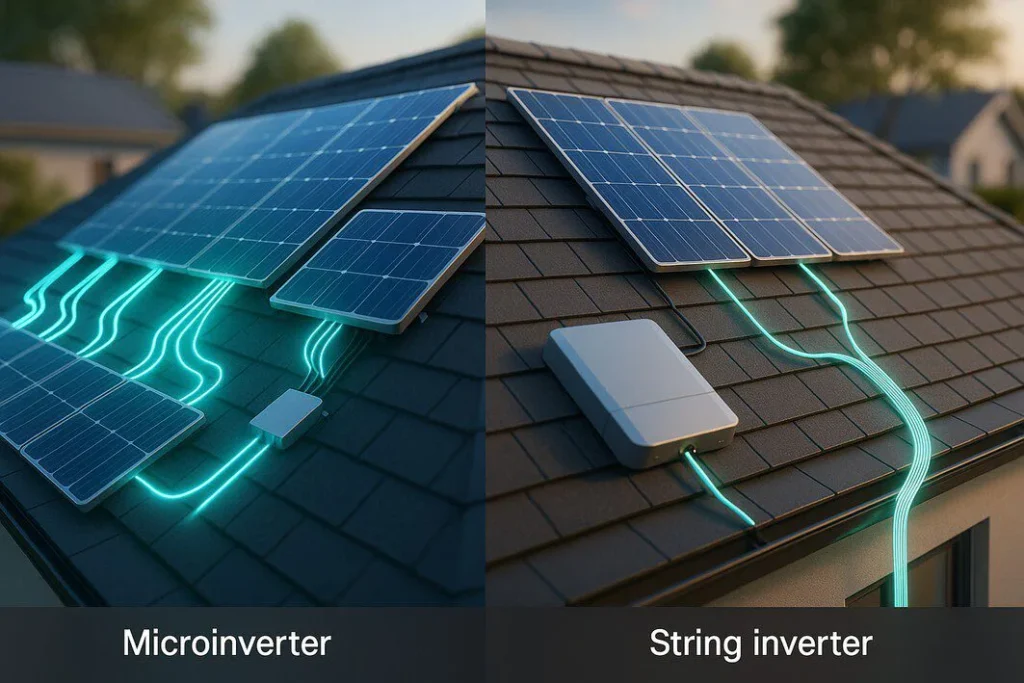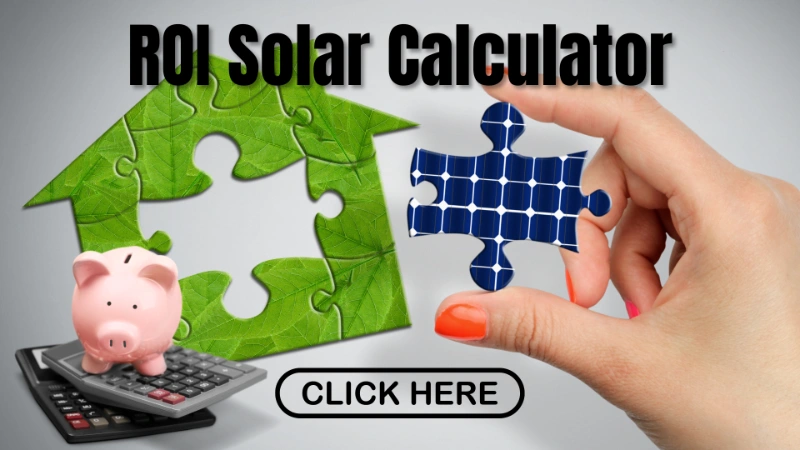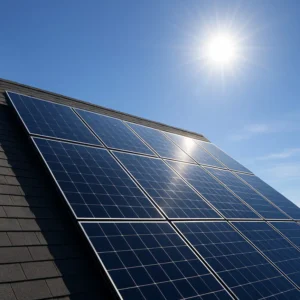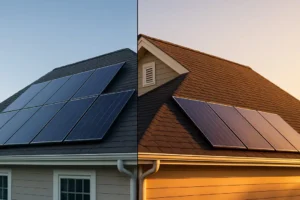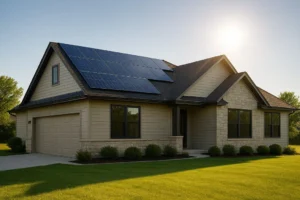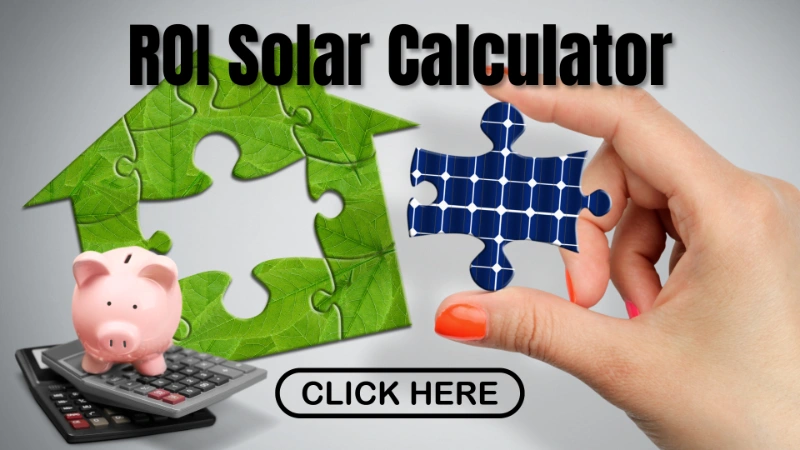When planning a residential solar installation, much of the focus goes to the solar panels themselves. However, the inverter you choose is just as critical—it’s the brain of your entire system. The primary difference between string and microinverters lies in how they convert energy, which directly impacts your system’s efficiency, cost, and performance. Understanding these two main solar inverter types is the key to selecting the best inverter for home solar and maximizing your return on investment.
Table of Contents
- What is a Solar Inverter and Why Is It Crucial?
- Understanding String Inverters: The Tried-and-True Standard
- Understanding Microinverters: The Modern, Panel-Level Solution
- Key Differences at a Glance: String vs. Microinverters
- Which is the Best Inverter for Your Home Solar System?
- Making an Informed Decision with RenewGenius
This guide will break down the pros and cons of both string inverters and microinverters to help you make a confident and informed decision for your home.
What is a Solar Inverter and Why Is It Crucial?
A solar inverter is a device that converts the direct current (DC) electricity generated by your solar panels into alternating current (AC) electricity. AC is the standard form of electricity used to power appliances, lights, and everything else in your home.
Without an inverter, the energy produced by your panels would be unusable. It manages the flow of energy, optimizes production, and provides crucial safety and performance data. Choosing the right one is fundamental to the efficiency and reliability of your entire solar energy system.
Understanding String Inverters: The Tried-and-True Standard
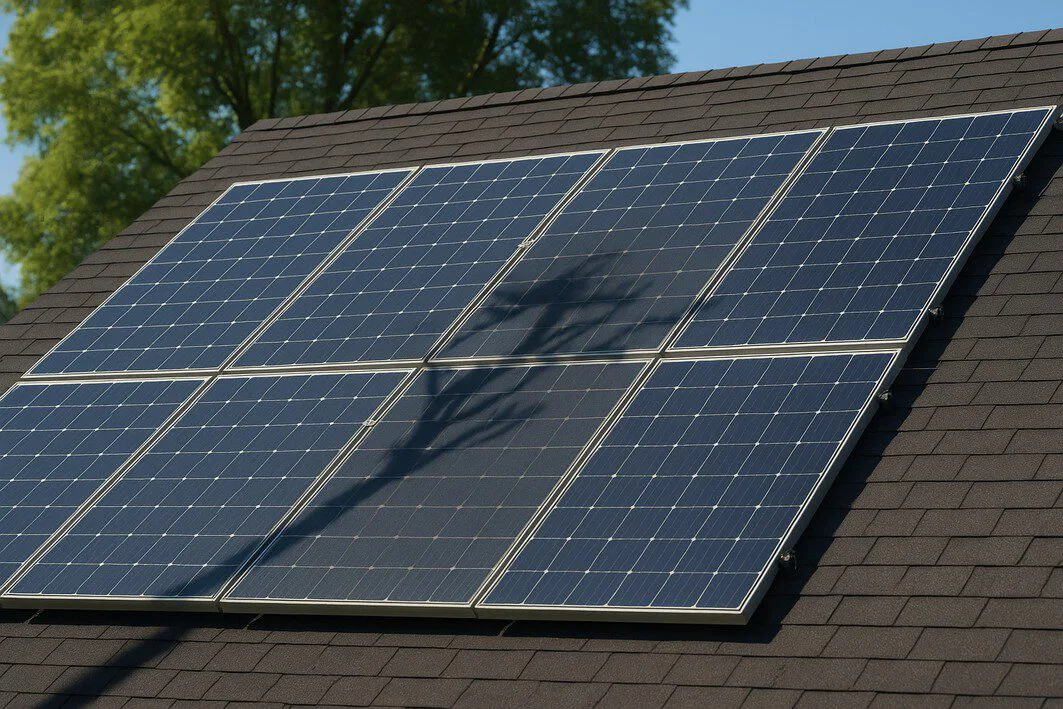
A string inverter is the most common and historically standard type of inverter for residential solar. In this setup, your solar panels are connected together in a series, or a “string.” The combined DC electricity from the entire string flows to a single, centralized inverter, which then converts all of it to AC power.
How String Inverters Work
Imagine your solar panels are like a string of holiday lights. They are all wired together, and the power flows through the entire circuit to one central point—the string inverter. This inverter is typically installed in a utility room, garage, or on an exterior wall.
Pros of String Inverters
- Cost-Effective: String inverters are the most budget-friendly option, with a significantly lower upfront cost compared to microinverters.
- Proven Technology: They have been the industry standard for decades and have a long track record of reliability.
- Simplified Maintenance: With only one inverter unit, troubleshooting is centralized. If there’s an issue, it’s easier to locate and service.
Cons of String Inverters
The “Christmas Light Effect”: Because panels are linked in a string, the entire system’s output is limited by the lowest-performing panel. If just one panel is shaded or covered in debris, the production of the entire string* drops to match it.
- Shorter Lifespan: The expected lifespan of a solar inverter of this type is typically 10-15 years. This means it will likely need to be replaced at least once during the 25-30 year lifespan of your solar panels.
- Less Design Flexibility: String inverters work best on simple, south-facing roofs with no shading. They are not ideal for complex roof layouts with multiple angles or orientations.
Understanding Microinverters: The Modern, Panel-Level Solution
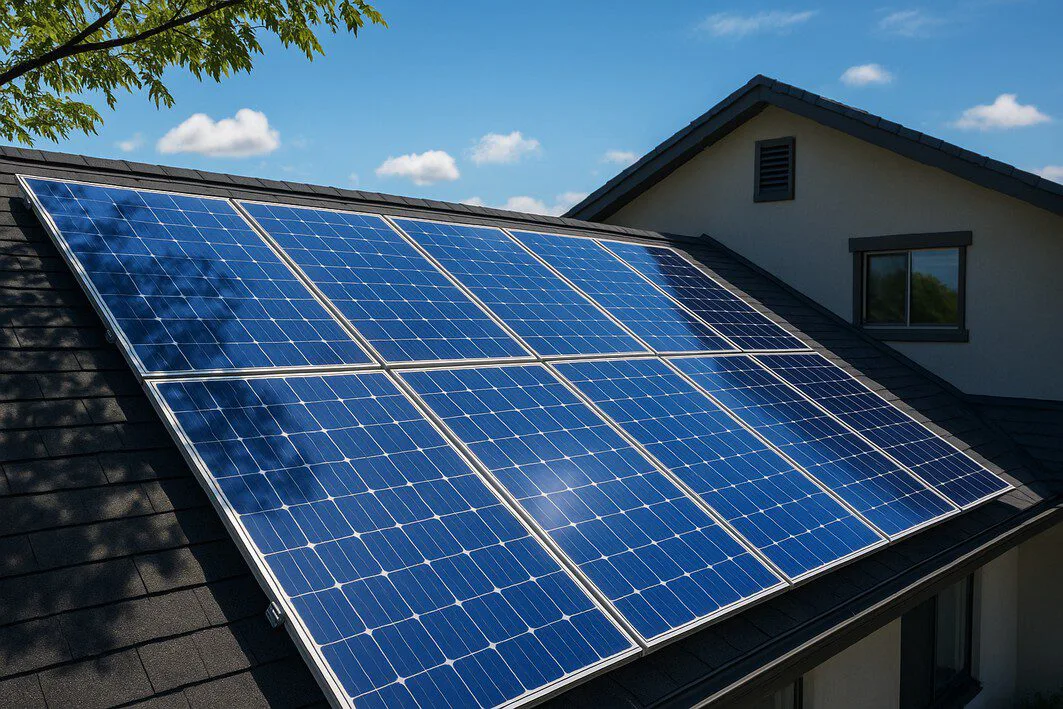
Microinverters represent a more modern approach to solar energy conversion. Instead of one central inverter, a small microinverter is installed on the back of each individual solar panel. This means DC to AC conversion happens right at the source.
How Microinverters Work
With a microinverter system, each solar panel operates as an independent power-producing unit. The AC power from each panel is then combined and sent to your home’s electrical panel. This distributed architecture eliminates the “Christmas light effect” seen with string inverters.
Pros of Microinverters
- Maximized Energy Production: If one panel is shaded or underperforming, it doesn’t impact the output of any other panels. This makes microinverters superior for homes with partial shading or complex roof designs.
- Panel-Level Monitoring: You can monitor the performance of each individual panel, making it easy to identify and troubleshoot issues. This granular data is a key part of our comprehensive solar knowledge base at RenewGenius, empowering homeowners with complete insight.
- Longer Lifespan: The expected lifespan of a solar inverter of the micro variety is typically 25 years, matching the warranty of the solar panels themselves. This means no costly mid-life replacements.
- Scalability: It’s easier to add more panels to your system in the future.
Cons of Microinverters
- Higher Upfront Cost: The primary drawback is the higher initial investment. The cost per watt is greater due to the number of individual units required.
- Complex Maintenance: While failures are less common, servicing a microinverter means getting on the roof and accessing an individual panel, which can be more complex than servicing a single string inverter on the ground.
Key Differences at a Glance: String vs. Microinverters
| Feature | String Inverter | Microinverter |
|---|---|---|
| Performance in Shade | Lower (entire string affected) | Higher (unaffected panels operate normally) |
| Upfront Cost | Lower | Higher |
| System Monitoring | System-level | Panel-level |
| Expected Lifespan | 10-15 years | 25+ years |
| Best For | Simple, unshaded roofs | Complex roofs, partial shading, max output |
Which is the Best Inverter for Your Home Solar System?
The right choice ultimately depends on your specific property, budget, and energy goals.
A string inverter might be the best choice if:
- You have a simple, uniformly-pitched roof with no shading issues.
- Your primary goal is the lowest possible upfront installation cost.
- You are comfortable with the likelihood of replacing the inverter in 10-15 years.
A microinverter is likely the best choice if:
- Your roof has multiple angles, dormers, or faces different directions.
- Your property experiences partial shading from trees, chimneys, or other buildings.
- You want to maximize every watt of energy production and get the best long-term return on investment.
- You value detailed, panel-level monitoring and a longer warranty.
Evaluating the long-term value is crucial. While microinverters cost more initially, their increased energy production and longer lifespan can often lead to greater savings over the life of the system. Using an ROI calculator to help take a decision can illuminate the financial benefits of improved efficiency over time.
Making an Informed Decision with RenewGenius
Choosing between the two main solar inverter types is a major step in designing your residential solar system. At RenewGenius, we believe in empowering homeowners with clear, comprehensive information. Understanding the components is just as important as understanding the savings.
To learn more about the other vital parts of a solar installation, from panels to batteries, you can explore our detailed guides on essential solar products. Our knowledge base is designed to give you the confidence you need to invest in a renewable energy future for your home.
In this post, we will explore the key differences between String vs. Microinverters, helping you to make the best choice for your solar energy needs.

